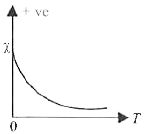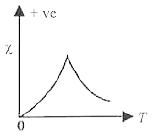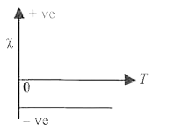The variation of magnetic susceptibility (χ) with absolute temperature T for a ferromagnetic material is
A

B

C

D

Video Solution
Text Solution
The correct Answer is:A
Susceptibility of a ferromagnetic substance falls with rise of temperature (chi=c/(T-T_(c))) and the substance becomes paramagnetic above Curie temperature, so magnetic susceptibility becomes very small above Curie temperature.
|
Topper's Solved these Questions
- MAGNETISM AND MATTERBOOK - A2ZCHAPTER - MAGNETISM AND MATTEREXERCISE - Section D - Chapter End Test
30 Videos
- MAGNETISM AND MATTERBOOK - A2ZCHAPTER - MAGNETISM AND MATTEREXERCISE - AIPMTNEET Questions
26 Videos
- GEOMETRICAL OPTICSBOOK - A2ZCHAPTER - GEOMETRICAL OPTICSEXERCISE - Section D - Chapter End Test
30 Videos
- MOCK TESTBOOK - A2ZCHAPTER - MOCK TESTEXERCISE - Mock Test 3
44 Videos
Similar Questions
Knowledge Check
The variation of magnetic susceptibility (χ) with absolute temperature T for a ferromagnetic material is
A B
B C
C D
D
The variation of magnetic susceptibility (χ) with absolute temperature T for a ferromagnetic material is
A B
B C
C D
D
The variation of magnetic susceptibility (x) with absolute temperature for antiferromagnetic material is given by
A B
B C
C D
D
At curie temperature, in ferromagnetic materials
View SolutionThe variation of magnetic susceptibility (χ) with temperature for a diamagnetic substance is best represented by
View SolutionThe variation of magnetic susceptibility (χ) with temperature for a diamagnetic substance is best represented by
View SolutionThe variation of magnetic susceptibility (χ) with temperature for a diamagnetic substance is best represented by
View SolutionPoint out the best representation of relation between magnetic susceptibility (χ) and temperature (T) for a paramagnetic material
View Solution
